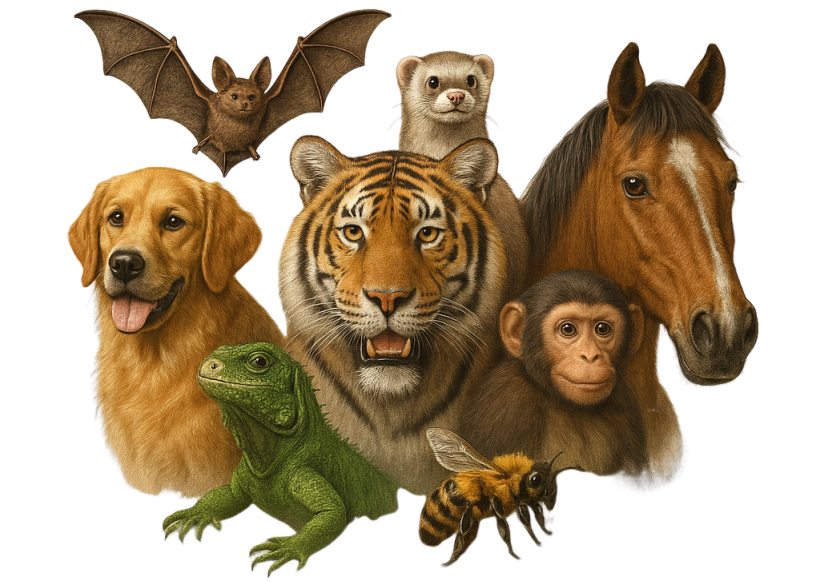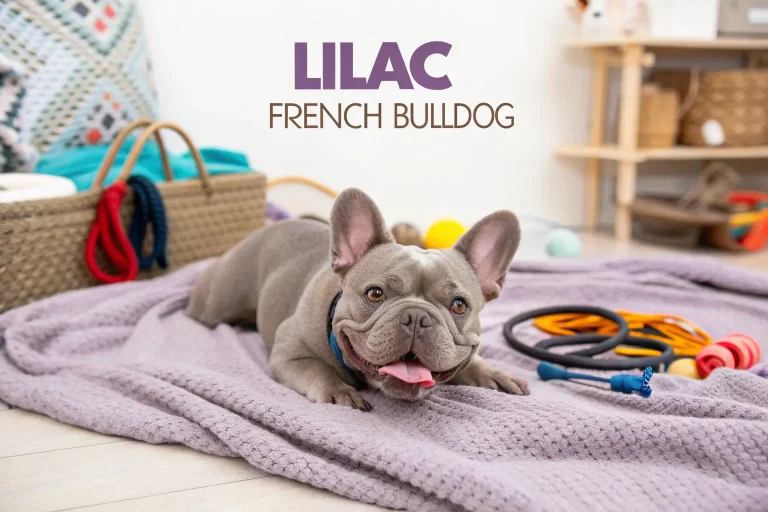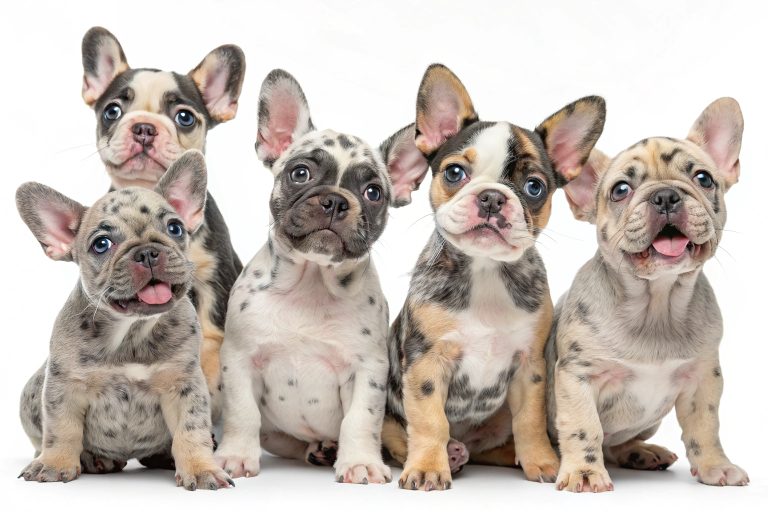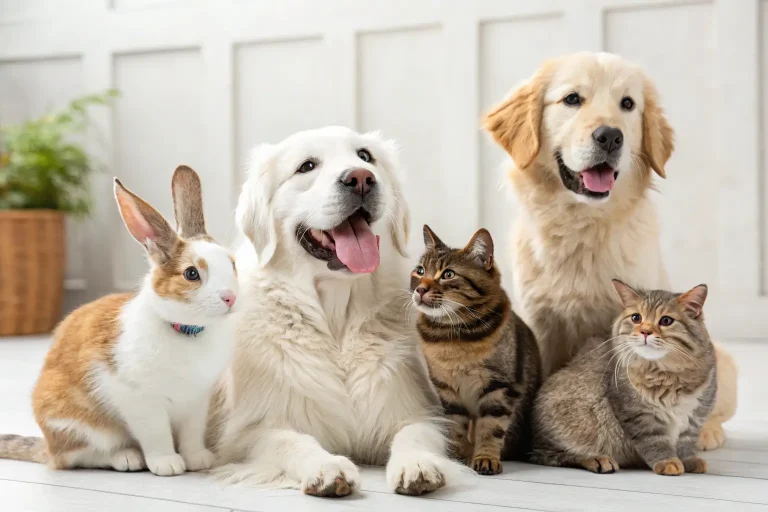Gray French Bulldog: 7 Key Traits to Charmed Life With Your Unique Pup
Are you considering bringing a gray French Bulldog into your home? These distinctive, slate-colored companions have captured hearts worldwide with their unique appearance and lovable personalities. The gray French Bulldog combines the breed’s signature bat ears and muscular build with a stunning coat that ranges from light silver to deep charcoal. Understanding their special traits is essential to creating a harmonious relationship with these characterful canines.
Introduction
The gray French Bulldog represents one of the most sought-after color variations of this beloved breed. With their distinctive blue-gray coats, expressive eyes, and compact bodies, these dogs bring both visual appeal and delightful companionship to their owners. While sharing the core characteristics of French Bulldogs, the gray variant comes with specific considerations regarding health, temperament, and care requirements that prospective and current owners should understand.
Learning about the nuances of gray French Bulldogs isn’t just fascinating—it’s crucial for providing optimal care. Their unique genetic makeup that creates the beautiful gray coat can sometimes bring specific health considerations. Plus, their distinctive temperament traits might differ slightly from their differently-colored cousins.
Did you know that the gray coloration in French Bulldogs comes from a dilution gene that affects black pigment? This genetic phenomenon transforms what would be a black coat into various shades of gray—from light silver to deep charcoal—giving these pups their eye-catching appearance that turns heads at dog parks everywhere!
Species Overview
Scientific Name: Canis lupus familiaris
Gray French Bulldogs fall under the same scientific classification as all domestic dogs. However, they represent a specific color variation within the French Bulldog breed, which was developed in the 1800s when lace workers from England brought their small Bulldogs to France during the Industrial Revolution.
Physical Characteristics
The gray French Bulldog typically weighs between 16-28 pounds and stands about 11-12 inches tall at the shoulder. Their distinctive gray coat can range from light silver to dark slate, sometimes with subtle brindle patterns. These dogs feature the breed’s characteristic bat ears, broad head, and compact, muscular body. Their short, smooth coat requires minimal grooming but sheds moderately throughout the year.
The gray coloration (sometimes called “blue” in breeding circles) results from a dilution gene that affects black pigment. Gray Frenchies often have matching gray noses and paw pads, completing their monochromatic look. Their eyes typically range from light amber to darker brown, providing a stunning contrast against their silvery coats.
Subspecies and Variations
While not technically subspecies, gray French Bulldogs come in several variations:
- Blue (standard gray): The most common shade, ranging from light to dark gray
- Blue and tan: Gray coat with tan markings on the face, chest, and legs
- Blue brindle: Gray base coat with darker striping patterns
- Blue pied: Gray patches on a predominantly white coat
- Lilac: A lighter, more purplish-gray tone resulting from dual dilution genes
Each variation maintains the characteristic French Bulldog structure while offering unique aesthetic appeal to potential owners looking for something distinctive.
Habitat and Distribution
Natural Habitat
As a domesticated companion breed, gray French Bulldogs thrive in human homes rather than wild habitats. They adapt particularly well to apartment living due to their small size and relatively low exercise requirements. These dogs prefer temperature-controlled environments, as their brachycephalic (short-muzzled) structure makes them sensitive to extreme heat and cold.
Geographic Range
Gray French Bulldogs can be found worldwide, with particular popularity in urban areas across North America, Europe, Australia, and increasingly in Asia. The United States, United Kingdom, and France maintain some of the highest populations of these distinctive dogs. Their adaptability to apartment living makes them particularly well-suited to city environments where space may be limited.
Adaptations
Gray French Bulldogs have adapted primarily to life as companion animals. Their compact frames allow them to navigate indoor spaces comfortably, while their reduced exercise requirements suit modern urban lifestyles. However, they’ve retained some of the sturdy build of their Bulldog ancestors, giving them a surprising robustness despite their small stature.
Their short coats require minimal maintenance, though this also means they have less protection against environmental extremes. Their most significant adaptation challenge relates to their brachycephalic structure, which can cause breathing difficulties, especially in hot or humid conditions. Gray French Bulldog owners must be particularly attentive to providing appropriate temperature control and avoiding strenuous exercise during warmer weather.
Diet and Feeding Habits

What They Eat
Gray French Bulldogs thrive on high-quality dog food specifically formulated for small to medium brachycephalic breeds. Their diet should be rich in animal proteins, contain moderate fat levels, and include limited carbohydrates. Many veterinary nutritionists recommend diets with novel protein sources for French Bulldogs, as they can develop food sensitivities.
A typical daily intake for an adult gray French Bulldog ranges from 1½ to 2½ cups of dry food, divided into two meals. Puppies require more frequent feeding—usually three to four times daily with specific puppy formulations to support healthy growth.
Eating Behavior
Gray French Bulldogs are notorious for their enthusiastic approach to mealtime. Their brachycephalic face structure can make eating challenging, so many prefer wide, shallow bowls that accommodate their flat faces. Some may benefit from slow-feeder bowls to prevent gulping and reduce the risk of bloat or excessive gas.
Many gray Frenchies display food guarding tendencies, a behavior that can be managed with proper training beginning in puppyhood. Establishing regular feeding schedules helps regulate their digestive system and can assist with housetraining efforts.
Dietary Needs and Considerations
Gray French Bulldogs have specific nutritional considerations that differ somewhat from other breeds:
Calorie management: Their somewhat sedentary nature makes them prone to weight gain. Carrying extra weight is particularly problematic for brachycephalic breeds, as it can exacerbate breathing difficulties.
Allergy-friendly formulas: Many gray Frenchies develop food sensitivities or allergies, particularly to common proteins like chicken or beef. Limited-ingredient diets or novel protein sources may be beneficial.
Joint support: Ingredients like glucosamine and chondroitin sulfate support joint health, important for a breed prone to skeletal issues.
Skin and coat supplements: Omega fatty acids help maintain the distinctive sheen of the gray coat while supporting skin health.
It’s worth noting that some gray French Bulldogs may have more sensitive digestion than their standard-colored counterparts, possibly due to the genetic factors that produce their distinctive coloration. Regular veterinary guidance can help optimize their nutrition for their specific needs.
Behavior and Social Structure
Social Behavior
Gray French Bulldogs are quintessential companion dogs with deeply social natures. They form intense bonds with their human families and typically display strong attachment behaviors. Unlike some independent breeds, Frenchies genuinely crave human interaction and can develop separation anxiety if left alone for extended periods.
With other dogs, gray French Bulldogs generally show friendly, playful behavior, though some males may display dominance toward other male dogs. Their play style tends to be boisterous but not aggressive. Early socialization is crucial to ensure they develop appropriate canine social skills.
Their compact size combined with their generally friendly demeanor makes gray French Bulldogs excellent candidates for multi-pet households. Many coexist happily with cats and other small pets, especially when introduced during puppyhood.
Communication
Gray French Bulldogs are surprisingly vocal despite not being excessive barkers. They communicate through a fascinating repertoire of sounds:
- Distinctive “talking” through unique vocalizations that range from grunts to yodels
- Expressive snorts and snuffles (partly due to their brachycephalic structure)
- Playful “Frenchie screams” during excited play
- Alert barking when strangers approach
Beyond vocalizations, they communicate heavily through body language:
- Whole-body wiggling when greeting loved ones
- Play bows to initiate games
- Ear positions that signal attention, alertness, or relaxation
- Direct eye contact when seeking connection with their humans
This rich communication style contributes significantly to their charm and the strong bonds they form with their owners.
Mating and Reproduction
Gray French Bulldogs reach sexual maturity between 6-9 months of age, though responsible breeding shouldn’t occur until they’re fully developed (typically around 2 years). Their reproductive process requires careful human intervention due to their unique physiology:
- Females typically experience heat cycles every 6 months, lasting approximately 3 weeks
- Natural mating is challenging due to the breed’s structure; artificial insemination is common
- Nearly 80% of French Bulldog litters require cesarean section delivery
- Average litter size ranges from 2-4 puppies, smaller than many other breeds
- Gray coloration is genetically recessive, making breeding specifically for this color complex
Ethical breeding considerations are particularly important with gray French Bulldogs, as the genes responsible for the dilute coloration can be associated with certain health conditions, including Color Dilution Alopecia. Responsible breeders prioritize health testing and genetic screening over color-specific breeding.
Conservation Status
Endangerment Level
As domesticated companion animals, gray French Bulldogs aren’t evaluated under conservation frameworks like the IUCN Red List. However, within pure-bred dog conservation efforts, French Bulldogs as a breed are considered secure with growing popularity. The gray/blue coloration specifically has seen increasing demand in recent years.
Threats
While not endangered, gray French Bulldogs face several threats to their overall welfare:
Health challenges: The genetic factors creating the gray coat color can sometimes be linked to skin conditions like Color Dilution Alopecia.
Irresponsible breeding: Their popularity has led to poor breeding practices focusing on color over health and temperament.
Breathing difficulties: As brachycephalic dogs, many struggle with Brachycephalic Obstructive Airway Syndrome (BOAS), which can be life-limiting without proper management or surgical intervention.
Thermal regulation issues: Their inability to cool efficiently makes them vulnerable to heat stroke, a potentially fatal condition.
Theft: Their high market value has unfortunately made them targets for theft in some regions.
Conservation Efforts
Efforts to ensure the welfare of gray French Bulldogs focus primarily on responsible breeding practices and owner education:
- Breed-specific health testing programs identify carriers of problematic genes
- Responsible breeder networks share knowledge and genetic diversity
- Frenchie rescue organizations rehabilitate and rehome dogs from poor situations
- Veterinary research into brachycephalic health issues benefits the breed
- Owner education campaigns promote understanding of the breed’s specific needs
Progressive breeding programs increasingly focus on moderating extreme physical characteristics to improve breathing function while maintaining the breed’s distinctive appearance and wonderful temperament.
Interesting Facts
The gray French Bulldog boasts a fascinating history and unique characteristics that make these dogs particularly special:
Historical significance: French Bulldogs originated when English lace workers brought small bulldogs to France during the Industrial Revolution. By the late 19th century, they had become fashionable companions of Parisian café society and bohemian artists.
Hollywood fame: Gray French Bulldogs have appeared in numerous films and television shows and are particularly popular with celebrities. Lady Gaga, Leonardo DiCaprio, and Dwayne “The Rock” Johnson all own or have owned Frenchies.
Unique sleeping positions: Gray French Bulldogs are known for their amusing sleeping positions, often lying flat on their backs with legs splayed in what owners affectionately call the “Frog Dog” position.
Can’t swim: Due to their top-heavy build and short muzzles, most French Bulldogs, including grays, cannot swim and should wear flotation devices near water.
Airplane challenges: Their brachycephalic structure makes air travel particularly risky. Many airlines have banned French Bulldogs from cargo holds, and some restrict cabin travel as well.
Distinctive “bat ears”: The breed’s trademark ears weren’t always standard. Early French Bulldogs had “rose ears” (folded back like English Bulldogs) until American fanciers standardized the now-iconic upright “bat ear.”
Snoring champions: Gray French Bulldogs are notorious for their loud snoring, which some owners report can reach decibel levels comparable to light power tools!
Tips for Caring for Your Gray French Bulldog
Providing optimal care for your gray French Bulldog requires attention to their unique needs:
Temperature Management
These dogs struggle with temperature regulation, particularly heat. Keep your gray Frenchie cool with:
- Air-conditioned environments during summer months
- Cooling mats or vests for outdoor activities
- Limited exercise during peak heat hours
- Never leaving them in cars, even with windows cracked
- Providing shade and fresh water when outdoors
Skin and Coat Care
Gray French Bulldogs often have more sensitive skin than other color variations:
- Regular bathing with gentle, hypoallergenic shampoos (every 4-6 weeks)
- Weekly coat wipe-downs with pet-safe moisturizing wipes
- Fold cleaning to prevent bacterial growth in facial and tail wrinkles
- High-quality diet with omega fatty acids for coat health
- Monitoring for signs of Color Dilution Alopecia (patchy hair loss, scaling)
Exercise Balance
Finding the right exercise balance is crucial:
- 20-30 minute walks in cool weather
- Indoor play sessions with puzzle toys
- Moderate play with other dogs of similar size
- Avoiding strenuous activity that can trigger breathing difficulties
- Mental stimulation through training and enrichment activities
Training Approach
Gray French Bulldogs respond best to:
- Positive reinforcement methods using treats and praise
- Short, consistent training sessions (5-10 minutes)
- Early socialization with various people, pets, and environments
- Gentle correction rather than harsh discipline
- Patience with their sometimes stubborn nature
Health Monitoring
Regular monitoring helps catch issues early:
- Scheduled veterinary check-ups every 6-12 months
- Dental care, including daily brushing and professional cleanings
- Weight management to prevent obesity-related complications
- Awareness of breed-specific issues like intervertebral disc disease
- Recognition of respiratory distress signs requiring immediate attention
Role in the Ecosystem
Domestic Ecosystem Impact
As domestic companions, gray French Bulldogs play significant roles in human social ecosystems:
Emotional support: Their affectionate nature makes them natural therapy and emotional support animals, providing comfort and reducing stress for many owners.
Social catalysts: Walking with a distinctive gray French Bulldog often facilitates human connections, creating community bonds through shared interest in these charming dogs.
Family integration: Their typically gentle temperament makes them excellent family dogs, teaching children about responsibility, empathy, and animal care.
Urban adaptation: Their modest exercise needs and apartment-friendly size make them well-suited to city living, filling the companion animal niche in urban settings.
Unlike wild animal species, domesticated French Bulldogs don’t have ecological roles beyond their human relationships. However, responsible ownership includes minimizing negative environmental impacts through proper waste management and avoiding disruption of wildlife during outdoor activities.
Impact of Breed Trends
The rising popularity of gray French Bulldogs has created both positive and negative ripple effects:
- Increased awareness of brachycephalic health issues has prompted veterinary research benefiting multiple breeds
- Growing demand has unfortunately fueled irresponsible breeding practices and puppy mills
- Their popularity has influenced broader dog fashion and accessory markets
- Rescue organizations have developed specialized knowledge about French Bulldog rehabilitation
Ethical ownership includes supporting responsible breeding practices that prioritize health over appearance and advocating for breed-specific welfare considerations in pet policies and legislation.
Conclusion
The gray French Bulldog represents a perfect blend of distinctive appearance and winning personality. Their unique blue-gray coats set them apart visually, while their affectionate, playful, and adaptable temperaments make them exceptional companions. Understanding their specific care requirements—from temperature management to skin care—enables owners to provide the quality of life these special dogs deserve.
While gray French Bulldogs require some specialized care due to their brachycephalic structure and potential skin sensitivities, the rewards of sharing your life with these charming companions far outweigh the extra attention they need. Their loyalty, expressiveness, and joyful approach to life create deep, meaningful bonds with their human families.
If you’re considering bringing a gray French Bulldog into your home, research reputable breeders who prioritize health testing over coat color, or explore Frenchie rescue organizations where many wonderful dogs await second chances. By making informed choices about acquisition, healthcare, and daily management, you can enjoy many years of delightful companionship with your distinctive gray Frenchie.
Frequently Asked Questions
Are gray French Bulldogs rare?
Gray (or “blue”) French Bulldogs are less common than standard colors like fawn, cream, or brindle. Their rarity contributes to their higher price point, typically ranging from $3,000-$10,000 depending on pedigree and breeder reputation. However, their popularity has increased substantially in recent years, making them more readily available than previously.
Do gray French Bulldogs have more health problems?
Gray French Bulldogs can be prone to Color Dilution Alopecia (CDA), a condition causing patchy hair loss and skin problems due to the dilution gene responsible for their coloration. They also share the standard French Bulldog health concerns, including breathing difficulties, spinal issues, and allergies. Working with a reputable breeder who conducts appropriate health testing can reduce these risks significantly.
How long do gray French Bulldogs typically live?
The average lifespan of a gray French Bulldog ranges from 10-12 years. Proper healthcare, appropriate diet, regular exercise, and maintaining healthy weight can help maximize their longevity. Some well-cared-for Frenchies have been known to reach 14-15 years of age.
Are gray French Bulldogs good with children?
Gray French Bulldogs typically make excellent family pets and generally interact well with children. Their patient, playful, and affectionate nature suits family life. However, as with any dog, interactions between young children and Frenchies should always be supervised, and children should be taught to respect the dog’s space and physical limitations.
How much exercise does a gray French Bulldog need?
Gray French Bulldogs require moderate exercise—typically 20-30 minutes of walking daily, split into two sessions during cooler parts of the day. Their brachycephalic (flat-faced) structure limits their ability to exercise vigorously or in warm weather. Indoor play and mental stimulation are equally important components of their exercise regimen.
Do gray French Bulldogs shed a lot?
Gray French Bulldogs are moderate shedders. They have short, fine hair that sheds year-round rather than seasonally. Weekly brushing with a soft bristle brush or rubber grooming mitt helps manage shedding and distributes skin oils through their coat. More frequent brushing during seasonal transitions can help reduce the amount of hair around your home.
How do I find a reputable gray French Bulldog breeder?
To find a reputable breeder, look for those who: conduct health testing for BOAS, hip dysplasia, and other breed-specific issues; allow you to meet the puppy’s parents; raise puppies in a home environment; prioritize health over color; provide lifetime support; and belong to recognized breed clubs. Be prepared to be interviewed yourself, as good breeders care deeply about where their puppies go.







